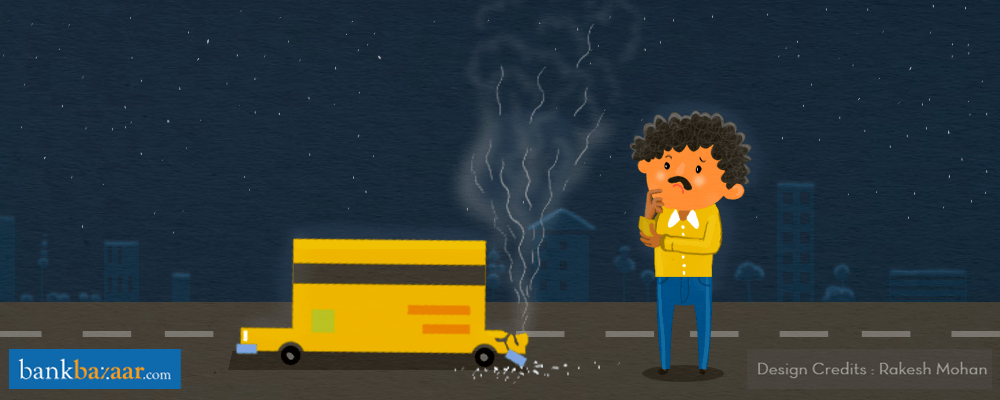Credit cards have rapidly become a key ingredient of the growing paperless economy. These help you to increase your purchasing power. You can make quick and easy payments even if you do not have the required funds at your disposal. Many card issuers also reward their customers with attractive offers, discounts, cashback deals and exclusive benefits on select purchases. Credit cards also offer an opportunity for you to build your credit unlike debit cards. However, credit cards must be considered as a short-term loan. It includes regular interest payments among other charges.
Every credit card company attaches interest rates and charges based on their discretion. It is important to learn about the charges and compare the interest rates before opting for a credit card.
If you are looking to apply for a credit card, consider the following costs and charges attached to a credit card:
with an annual fee which needs to be paid once in the lifetime of a card. The fee associated with each card varies. It usually ranges between 0 and Rs.30,000. The amount is usually billed in the card statement of the particular month. A number of card issuers have now introduced ‘zero or lifetime free’ annual fees or offer a limited period for with no annual fees.
When your application for a credit card gets sanctioned, most card issuers charge a joining fee which ranges from 0 to Rs.1 lakh. A credit card renewal fee is a predetermined amount which needs to be cashed once every year.
Charges related to finances
Most credit card companies offer an interest-free period to the cardholders. However, if you are unable to make timely credit card bill payments, an interest rate within 23%-47% would be charged to your account. The interest-free period becomes reactivated only after payment of the pending dues.
Fees for cash withdrawal
Cash withdrawal fees or cash advances fees are billed to your account if you withdraw cash from an ATM using your credit card. This fee is usually 2%-3.5% of the withdrawn amount or Rs.500, the higher of the two. The total amount to be paid is tallied from the day of the withdrawal until repayment.
Penalty for late payment
You can be charged with an overdue penalty if you are unable to make timely payments as per thebill statement or at least pay the minimum balance. Credit card issuers decide the value of the penalty depending upon the balance on the card.
Over limit-related charges
If you surpass the predetermined credit limit, you could be billed with anover limit penalty. The penalty could fall anywhere between 2.5%-3% for a minimum withdrawal of Rs.500.
Surcharge payment
Incase of credit transactions, surcharge is the tax associated with goods and services. 2.5% is charged for railway-related expenditure and 1% or Rs.10 is charged for fuel-related cost. If the transaction for fuel exceeds Rs.400 or Rs.500, it is free from surcharge .
Charges for transactions in foreign currency
A conversion fee is applied if a credit card is used overseas. Credit issuers can charge up to 3.5% for an international transaction.t
Additional charges
A credit card is loaded with other charges such that are associated with deposits, delayed payments, fraudulent transactions and card replacement.
Bottom line
It is important to remember that, even though credit cards can be a helpful financial tool, it needs to be utilized responsibly. Factors such as delayed payments, outstanding dues and penalties can detrimentally bring down your credit score. The only way to enjoy the rewarding offers and benefits offered by credit cards is to make timely payments and regulate your credit card utilization.
Every credit card company attaches interest rates and charges based on their discretion. It is important to learn about the charges and compare the interest rates before opting for a credit card.
If you are looking to apply for a credit card, consider the following costs and charges attached to a credit card:
Annual fee payment, fees for joining and renewal
Every credit card is accompaniedWhen your application for a credit card gets sanctioned, most card issuers charge a joining fee which ranges from 0 to Rs.1 lakh. A credit card renewal fee is a predetermined amount which needs to be cashed once every year.
Charges related to finances
Most credit card companies offer an interest-free period to the cardholders. However, if you are unable to make timely credit card bill payments, an interest rate within 23%-47% would be charged to your account. The interest-free period becomes reactivated only after payment of the pending dues.
Fees for cash withdrawal
Cash withdrawal fees or cash advances fees are billed to your account if you withdraw cash from an ATM using your credit card. This fee is usually 2%-3.5% of the withdrawn amount or Rs.500, the higher of the two. The total amount to be paid is tallied from the day of the withdrawal until repayment.
You can be charged with an overdue penalty if you are unable to make timely payments as per the
Over limit-related charges
If you surpass the predetermined credit limit, you could be billed with an
Surcharge payment
In
Charges for transactions in foreign currency
A conversion fee is applied if a credit card is used overseas. Credit issuers can charge up to 3.5% for an international transaction.t
Additional charges
A credit card is loaded with other charges such that are associated with deposits, delayed payments, fraudulent transactions and card replacement.
Bottom line
It is important to remember that, even though credit cards can be a helpful financial tool, it needs to be utilized responsibly. Factors such as delayed payments, outstanding dues and penalties can detrimentally bring down your credit score. The only way to enjoy the rewarding offers and benefits offered by credit cards is to make timely payments and regulate your credit card utilization.




